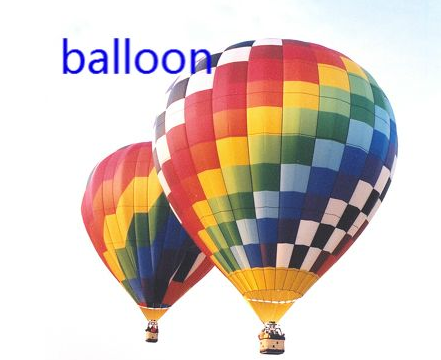达 芬奇: Leonardo di ser Piero da Vinci (April 15, 1452 – May 2, 1519) was an Italian polymath: architect, anatomist, sculptor, engineer, inventor, mathematician, musician, scientist, and painter. He has been described as the archetype of the "Renaissance man", a man infinitely curious and equally inventive. He is widely considered to be one of the greatest painters of all time, and perhaps the most intelligent and capable man to ever have lived. He was born and raised in Vinci, Italy. Leonardo is famous for his realistic paintings, such as the Mona Lisa and The Last Supper, as well as for influential drawings such as the Vitruvian Man. He conceived ideas vastly ahead of his own time, notably conceptually inventing a helicopter, a tank, the use of concentrated solar power, a calculator, a rudimentary theory of plate tectonics, the double hull, and many others. Relatively few of his designs were constructed or were feasible during his lifetime; modern scientific approaches to metallurgy and engineering were only in their infancy during the Renaissance. In addition, he greatly advanced the state of knowledge in the fields of anatomy, astronomy, civil engineering, optics, and the study of water (hydrodynamics). Of his works, only a few paintings survive, together with his notebooks (scattered among various collections) containing drawings, scientific diagrams and notes. Leonardo had no surname in the modern sense; "da Vinci" simply means "from Vinci". His full birth name was "Leonardo di ser Piero da Vinci", meaning "Leonardo, son of (Mes)ser Piero from Vinci." Professional life The earliest known dated work of Leonardo's is a drawing done in pen and ink of the Arno valley, drawn on 5 August 1473. It is assumed that he had his own workshop between 1476 and 1478, receiving two orders during this time. From around 1482 to 1498, Ludovico Sforza, Duke of Milan , employed Leonardo and permitted him to operate his own workshop, complete with apprentices. It was here that seventy tons of bronze that had been set aside for Leonardo's "Gran Cavallo" horse statue (see below) was cast into weapons for the Duke in an attempt to save Milan from the French under Charles VIII in 1495. When the French returned under Louis XII in 1498, Milan fell without a fight, overthrowing Sforza . Leonardo stayed in Milan for a time, until one morning when he found French archers using his life-size clay model of the "Gran Cavallo" for target practice. He left with Salai, his assistant and intimate, and his friend Luca Pacioli (the first man to describe double-entry bookkeeping) for Mantua, moving on after 2 months to Venice (where he was hired as a military engineer), then briefly returning to Florence at the end of April 1500. In Florence he entered the services of Cesare Borgia, the son of Pope Alexander VI, acting as a military architect and engineer; with Cesare he travelled throughout Italy. In 1506 he returned to Milan, now in the hands of Maximilian Sforza after Swiss mercenaries had driven out the French. From 1513 to 1516, he lived in Rome, where painters like Raphael and Michelangelo were active at the time, though he did not have much contact with these artists. However, he was probably of pivotal importance in the relocation of David (in Florence), one of Michelangelo's masterpieces, against the artist's will. Most of his most prominent pupils or followers in painting either knew or worked with him in Milan, including Marco D'Oggione[1], Bernardino Luini, and Giovanni Antonio Boltraffio. Leonardo da Vinci tomb in Saint Hubert Chapel (Amboise).In 1515, François I of France retook Milan, and Leonardo was commissioned to make a centrepiece (a mechanical lion) for the peace talks between the French king and Pope Leo X in Bologna, where he must have first met the King. In 1516, he entered François' service, being given the use of the manor house Clos Lucé (also called "Cloux"; now a museum open to the public) next to the king's residence at the royal Chateau Amboise, where he spent the last three years of his life. The King granted Leonardo and his entourage generous pensions: the surviving document lists 1,000 écus for the artist, 400 for Count Francesco Melzi, (his pupil and allegedly one of the great loves of his life, named as "apprentice"), and 100 for Salai ("servant"). In 1518 Salai left Leonardo and returned to Milan, where he eventually perished in a duel. François became a close friend. Some twenty years after Leonardo's death, François told the artist Benevenuto Cellini that he believed that "No man had ever lived who had ...
martin luther king英文简介
Martin Luther King, Jr. (January 15, 1929 – April 4, 1968) was an American clergyman activist and prominent leader in the African American civil rights movement. His main legacy was to secure progress on civil rights in the United States, and he has become a human rights icon: King is recognized as a martyr by two Christian churches.[1] A Baptist minister, King became a civil rights activist early in his career.[2] He led the 1955 Montgomery Bus Boycott and helped found the Southern Christian Leadership Conference in 1957, serving as its first president. King's efforts led to the 1963 March on Washington, where King delivered his "I Have a Dream" speech. There, he raised public consciousness of the civil rights movement and established himself as one of the greatest orators in U.S. history.
balloon用英语怎么读
balloon读音:英 [bə'luːn] 美 [bə'luːn]
n. 气球;球状物 vt. 使膨胀
vi. 乘气球飞行;激增;如气球般膨胀 adj. 气球状的
例句:
1、A balloon floated across the sky.
有个气球从空中飘过。
2、Her skirt ballooned in the wind.
她的裙子让风吹得鼓起来了。

扩展资料:
近义词
1、inflate
读音:英 [ɪn'fleɪt] 美 [ɪn'fleɪt]
vt. 使膨胀;使得意;使通货膨胀 vi. 膨胀
例句:We all started to inflate our balloons and eventually one burst.
我们都开始给气球充气,结果有一个爆掉了。
2、expand
读音:英 [ɪk'spænd] 美 [ɪk'spænd]
v. 使 ... 膨胀;详述;扩张;增加;张开
例句:Metals expand when they are heated.
金属遇热则膨胀。
3、swell
读音:英 [swel] 美 [swel]
v. (使)膨胀;(使)鼓起;(使)增长
n. 增大;膨胀;肿胀;汹涌
adj. <;口>;很棒的;时髦的;一流的
例句:There was a swell in the city's population.
该市出现过人口膨胀。



